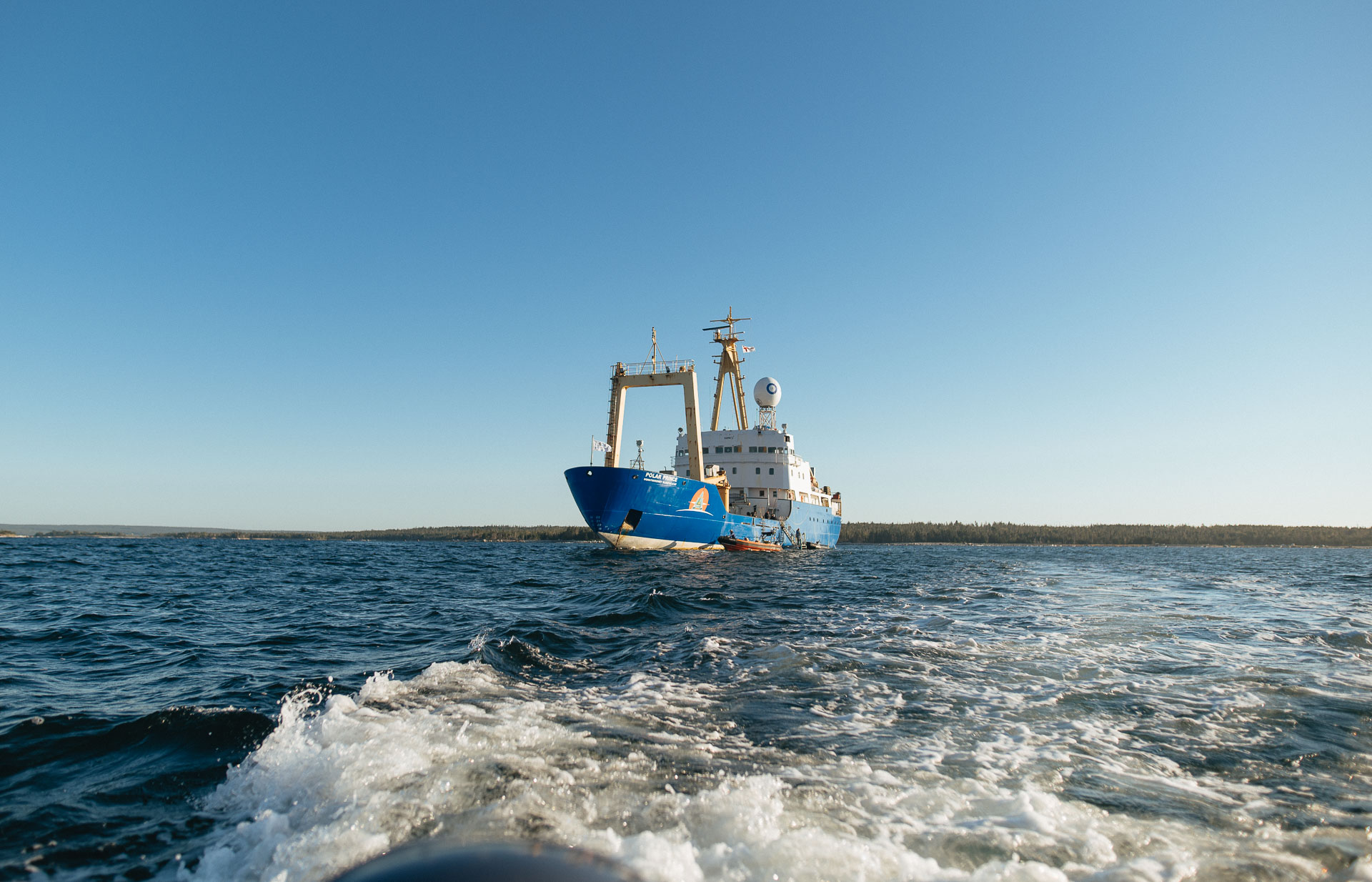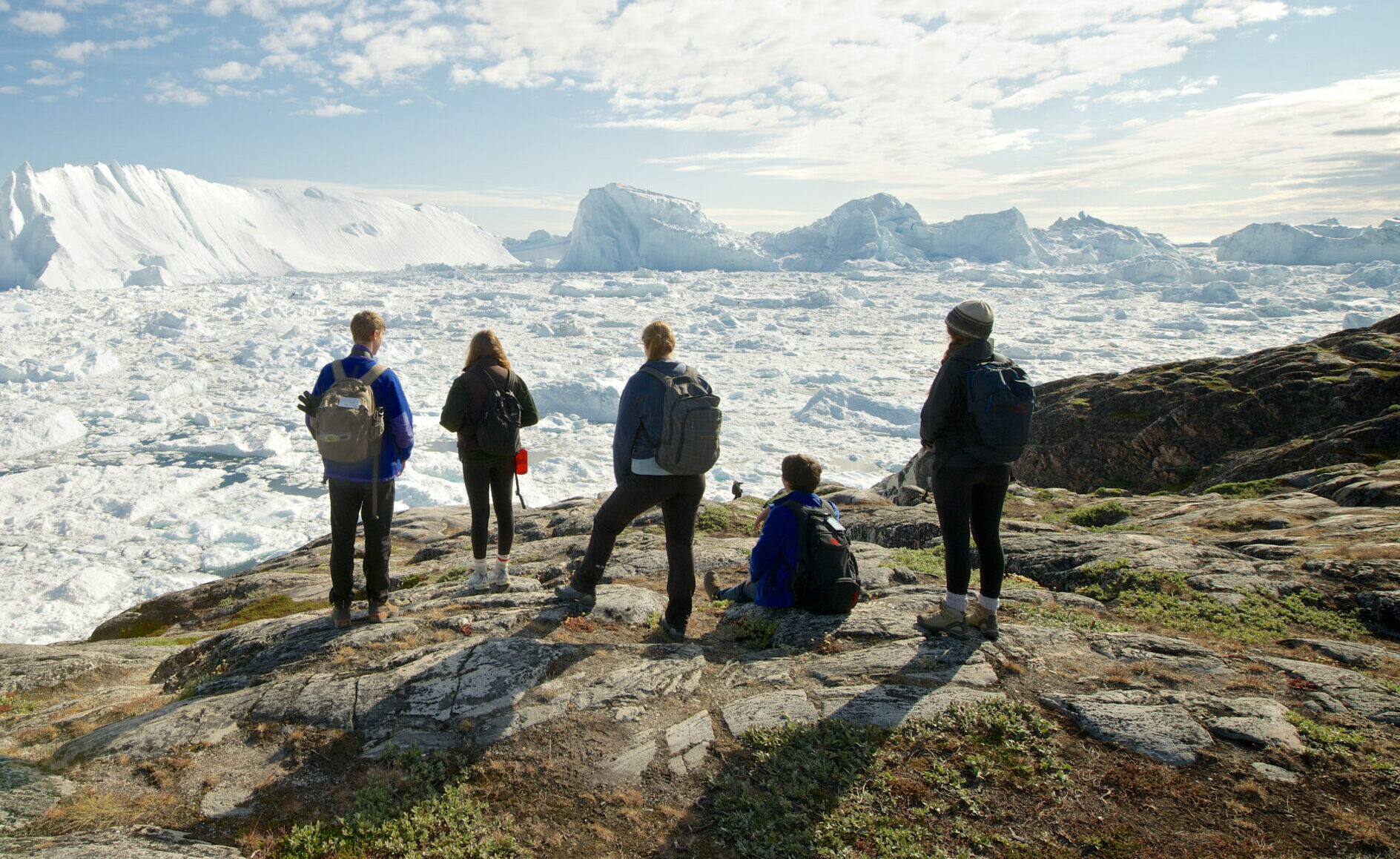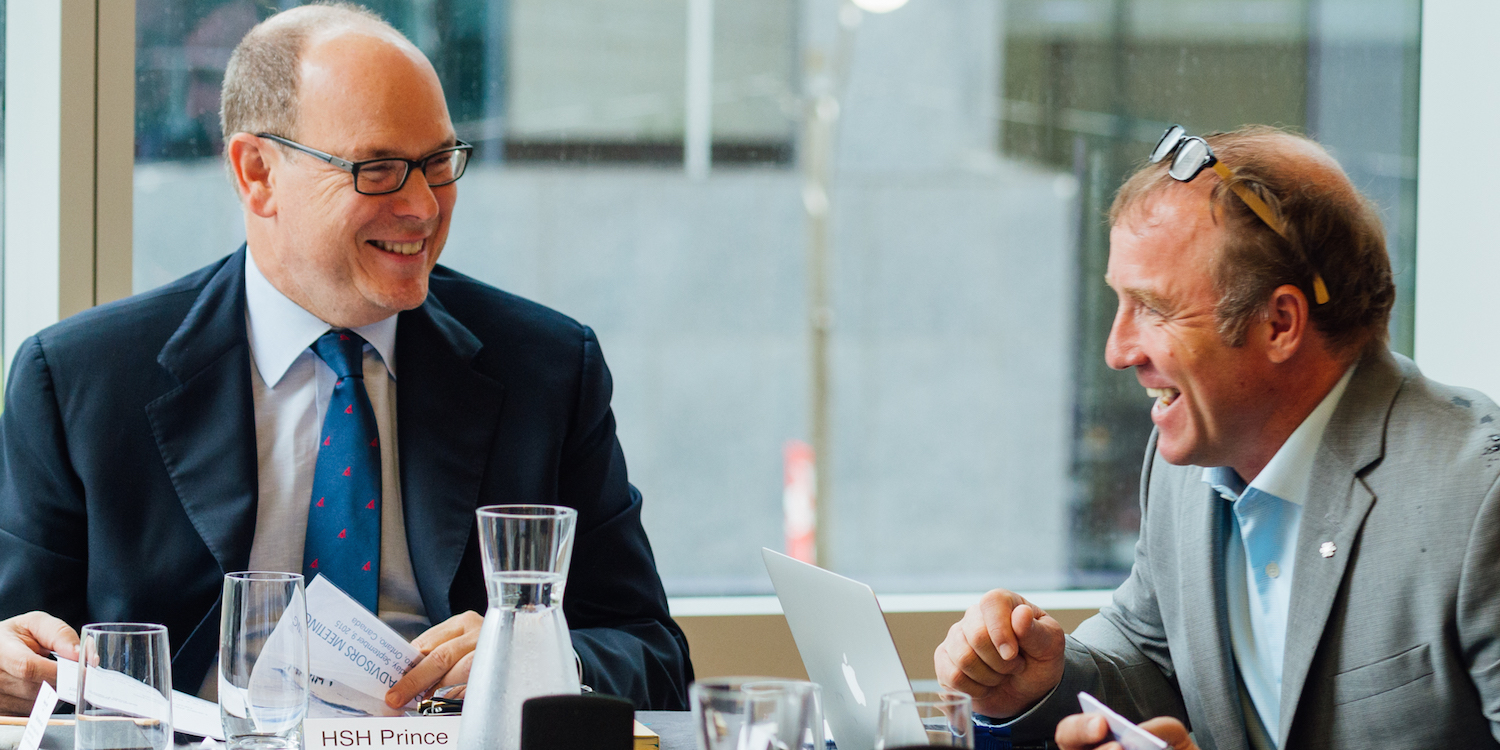Ocean Conservation Expedition: September 15-17
Waking up to a beautiful sunrise on the cliffs at Rocky Corner on Grand Manan Island, we geared up for another day of activities. First thing in the morning, a crew of marine biologists, accompanied by the Wolastoqey youth, headed out to haul in the lobster trap that had been placed the night before. Their catch for the day, eight lobsters, were taken back to the ship to be processed in the wet lab. The rest of the morning was spent engaged in BEAHR training on marine ecology and conservation, hosted by Mal from ECO Canada, in the hangar. Later on, we headed out for a landing at Southern Wolf Island Nature Preserve, where we hiked up to the lighthouse and spent some time identifying species in the intertidal zone. This was one of our first opportunities to learn about the invasive green crab.

That afternoon we were surprised by some exciting visitors! Mackie and Richard from the Campobello Whale Rescue Team joined us on board the Polar Prince and regaled us with their stories of rescuing whales caught in fishing gear. Their whale disentanglement team responds to about 10-15 calls each year across the Atlantic region. They head out in boats with their equipment to free whales often caught in fishing gear. When they’re not saving whales, Mackie and Richard live on Campobello Island working as fishermen.
I think a Marine Protected Area is a great idea.[…] for the good of the whole fishery, for the good of the ocean, I think we need Marine Protected Areas. I mean, [the ocean] is not a never ending resource and I think we can see looking back over the years the cod were so thick here when Cabot came… we’re definitely hurting the ocean, so I think it is a good practice, I think it’s going to be valuable. And looking at it from a fisherman’s point of view, I might lose a bit of my catch for the next 5 years, because I can’t fish in that area but [I think of ] how much benefit I’m gonna have 25 years after that, and for my grandchildren too. – Mackie Greene, Campobello Whale Rescue
We wrapped up the day with a sunset zodiac tour of ‘the river’ at Head Harbour and checked out the lobster fishing boats anchored there. Herons, eagles, and ravens soared above us while we discovered some anemones and tunicates off the side of the wharf and beneath the waves.
The next day, while eating breakfast, we were lucky enough to have three humpback whales swim alongside the ship as we sailed north towards the Musquash Estuary Marine Protected Area (MPA). Our plan to meet for an early morning briefing was “de-whaled” (derailed)! Despite the cold wind, many people were out on the bow to watch the whales showing off their flukes.

Unfortunately, the cold and wind meant we weren’t able to launch the zodiacs. So, some folks spent time in the hangar beading with Alanna while others participated in more BEAHR training. The topic of the session was focused on questions like “Who owns the ocean? Can anyone own the ocean?” diving into the complexities of governance and fisheries. This was followed by a presentation on holistic approaches to taking care of ourselves and our communities by Ken Paul, an incredible advocate, negotiator, and researcher who works primarily on ocean governance and fisheries.

That evening after dinner some of us went out for a shore clean-up and a swim, and others went out to do a surface trawl for microplastics with Shayelin and Aiden, who work with ACAP St John. They used a manta trawl to collect their samples and will process them back at their lab to determine what kind of microplastics might be in this marine protected area.

The next morning, with the tides in mind, we took a zodiac cruise down the Musquash River. The Musquash Estuary Marine Protected Area is one of the few MPAs that is actually established in the Atlantic region. Since the arrival of settlers, 85% of these estuaries and tidal marshes around the Bay of Fundy have been altered or destroyed, making this a special area. To have an ecosystem like this that is still very intact is incredibly important. The life created by these tidal marshes and estuaries has fed generations of people. This marine environment means a great deal to the entire human history of this region.

To honour International Coastal Cleanup Day we picked up some garbage on Black Beach in Musquash. We’re thrilled to share that there really wasn’t much there, maybe because it’s an MPA! We spent some time enjoying the beach, exploring the intertidal zone, finding tide pool anemones, and collecting Jonah crabs and kelp.
Before we set sail for Saint John, some of our team went out for another microplastic trawl in the zodiac. Others stayed on the ship to paint and finish up their BEAHR training. We arrived in the Saint John harbour under a beautiful and colourful sunset. With the aid of a tugboat escort, and a pilot on board to help us navigate the harbour and safely dock the ship. Before saying goodbye, Loretta and Shianne gifted expedition leader Geoff the painted drum and the whale painting they had been working on throughout their journey. It was an emotional send-off for those departing the ship. Now, they return home with new stories to share, new memories, new inspirations, and new commitments to working towards ocean health.

Students on Ice wouldn’t be where they are today
If it wasn’t for Geoff Green I would say
I understand you’ve had a helping hand
But this program wouldn’t exist without the founding man
What you’re doing is wonderful and has brought many here
from all different cultures and areas of this sphere
You’ve brought a lot individuals together as one
You have given them an abundance of education and fun
I whole heartedly believe I speak for us all
Woliwon for what you’ve done for us this fall!
– Lindsay Davidson of St Mary’s First Nation





